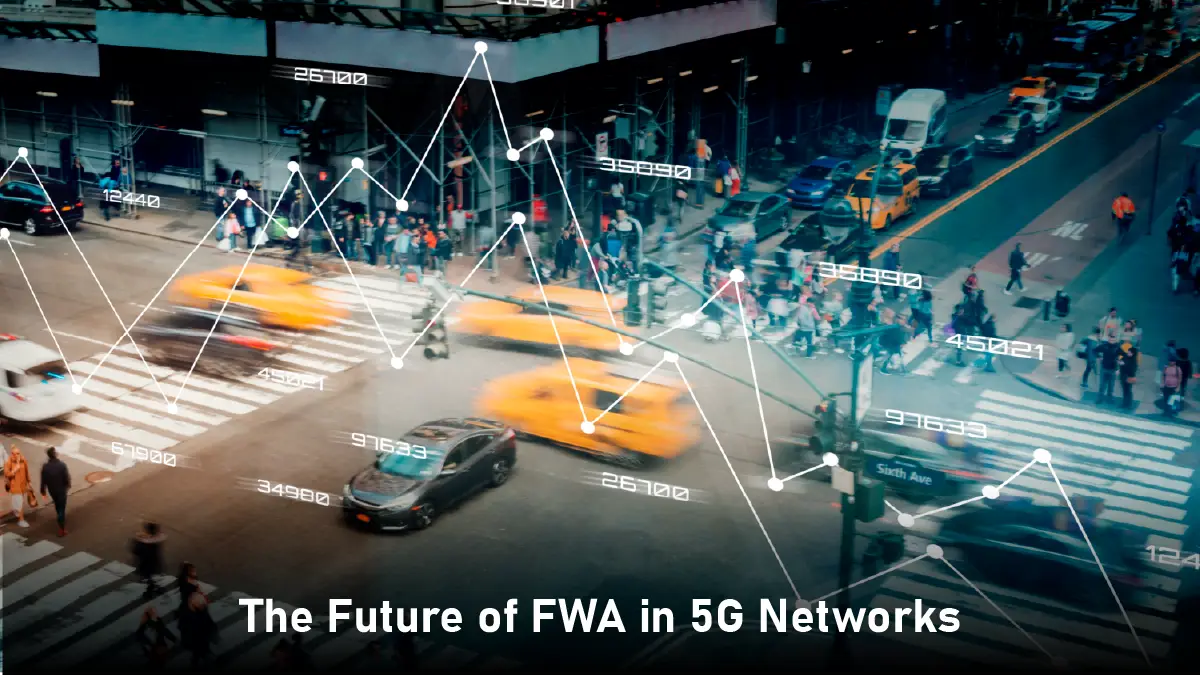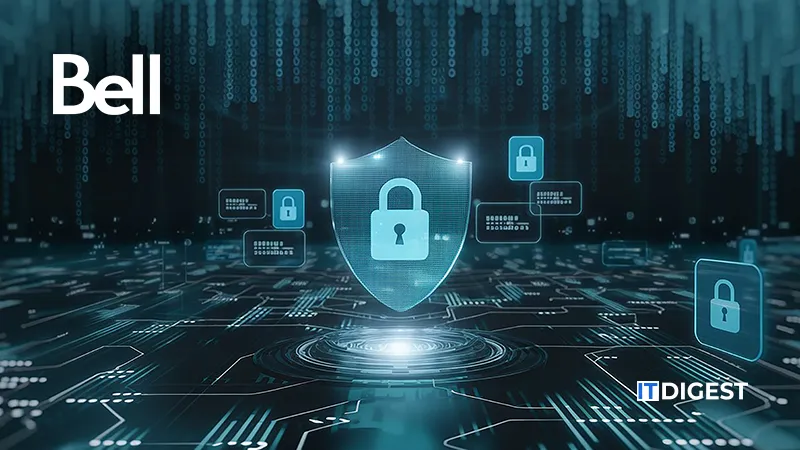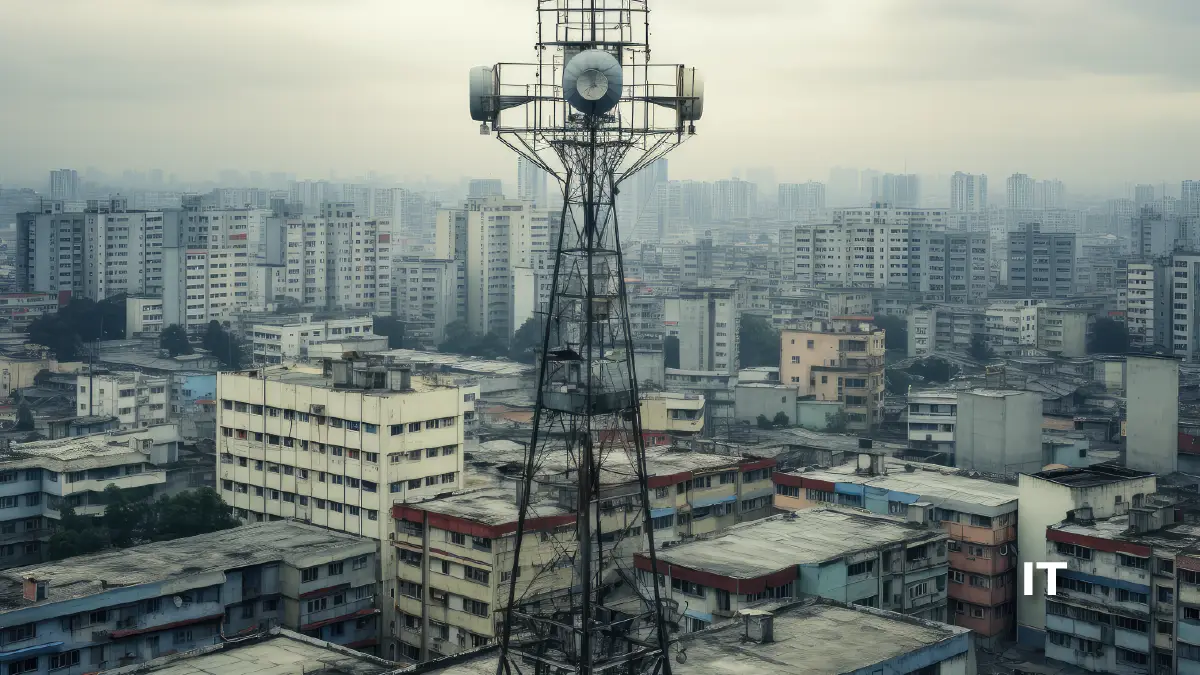Fast and reliable internet is essential in today’s world. While cable and fiber work well in cities, they can be slow and expensive to install in rural areas. Fixed Wireless Access (FWA), especially with 5G, addresses this challenge. This blog will explain what FWA is, how it uses 5G, and what the future holds for this technology.
What is Fixed Wireless Access (FWA)?
Fixed Wireless Access (FWA) provides fast internet using wireless signals instead of cables. A small device is placed at your home or business. This device connects wirelessly to a nearby cell tower. It is just how your smartphone connects to the internet. The main difference is that FWA is designed for homes and businesses, not just for mobile phones.
So how is Fixed Wireless Access different from regular Wi-Fi?
Regular Wi-Fi connects your devices to a router inside your home. This router gets internet through cables like fiber or cable. Fixed Wireless Access (FWA) is different. Here, the router gets internet wirelessly from a nearby cell tower. This means no cables are needed to bring internet to your home.
How Does Fixed Wireless Access Work with 5G?
5G is the newest mobile network technology. It offers faster speeds and lower delays than older networks like 4G. With 5G FWA, homes and businesses get fast internet without cables. It can reach speeds of 100 Mbps or more, making streaming, video calls, and gaming smooth.
Why is Fixed Wireless Access Important for 5G Network Expansion?
Expanding 5G networks is hard in places where installing cables is difficult or expensive. Here’s why FWA is so important:
1. Quick and Easy Installation
Installing FWA is much faster than laying fiber or cable. It’s great for rural areas where digging takes a long time.
2. Cost-effective
Building fiber networks is expensive, especially in areas with few people. FWA uses existing 5G towers, so there’s no need for costly construction. This makes it a smart choice for bringing internet to places that wouldn’t otherwise get it.
3. Flexible and Scalable
FWA is easy to expand. As more people need internet, providers can add more cell towers or upgrade their equipment. This makes it ideal for cities and rural areas.
4. Bridging the Digital Divide
Many people in rural or underserved areas don’t have fast internet. FWA helps fix this by bringing high-speed internet to places where traditional networks can’t reach.
Also Read: How Automated Remediation is Transforming Incident Response in 2025
Real-world Examples of FWA in Action
Let’s look at some real-life examples of how FWA is being used around the world:
United States
Telecom companies like Verizon and T-Mobile offer 5G FWA services in the U.S. These services are available in many cities and rural areas. They offer speeds that rival traditional broadband. Over 10 million U.S. households are estimated to use FWA for their home internet by 2025.
India
India has a huge rural population. Many villages in India still lack reliable internet. Telecom companies in India use 5G FWA to connect remote areas. This supports the government’s goal to bring digital services to everyone. It helps people access online education, healthcare, and government services.
Europe
FWA helps Germany and the UK reach their national internet goals. FWA offers a fast and affordable option in places where fiber is slow to install or costly.
How FWA Benefits Different Users
FWA isn’t just for homes, it’s also useful for businesses, schools, and public services.
For Homes
Families can use fast internet for streaming, gaming, video calls, and more. FWA is very helpful for people who don’t have cable or fiber internet.
For Businesses
Small businesses can use FWA to get reliable internet without the high cost of fiber installation. This is great for shops, offices, and even farms that need to stay connected.
For Schools and Public Services
Schools in remote areas can use FWA to get online learning materials. Hospitals and government offices can also use it for fast and reliable internet.
Challenges
FWA is a great technology; however, it poses some challenges:
1. Line-of-Sight
FWA works best when there is a clear path between the cell tower and the receiver at your home. Trees, buildings, or hills can block the signal and reduce speed or reliability.
2. Network Congestion
The network can get crowded and speeds may slow down if many people in an area use FWA. Providers need to manage this carefully to ensure that everyone gets good service.
3. Spectrum Availability
FWA needs access to certain wireless frequencies (called spectrum). In busy areas, there may not be enough spectrum available. This can hamper efficiency and performance.
4. Weather
Modern FWA systems are designed to handle most weather conditions. However, heavy rain or storms can sometimes affect wireless signals.
The Future of FWA in 5G Networks
The future looks bright for FWA. As 5G technology improves, FWA will become even faster and more reliable. Here are some trends to watch:
1. Faster Speeds
Advances in 5G will allow FWA to deliver speeds of 1 Gbps or more. This will make it as fast as the best fiber internet.
2. Wider Coverage
More cell towers and better technology will help FWA reach even more people, including those in very remote areas.
3. Smart Cities and IoT
FWA can connect smart devices, traffic lights, security cameras, and more, helping cities run more efficiently.
4. Global Growth
Experts say that more than 300 million people globally could use FWA by 2030. This growth will help bring internet access to many people who don’t have it now.
How to Get Started with FWA
If you want FWA for your home or business, follow these steps:
· Check if FWA is available in your area by contacting local internet providers or using their online coverage tools.
· Compare different FWA plans to find one that suits your needs and budget. Look at speeds, data limits, and prices.
· If available, schedule an installation. A technician will come to set up the equipment.
· Once installed, enjoy fast internet without cables or fiber.
Fixed Wireless Access vs. Other Internet Options
| Internet Type | Speed | Installation | Cost | Availability |
| Fiber | Very Fast | Slow/Expensive | High | Limited |
| Cable | Fast | Moderate | Moderate | Urban Areas |
| DSL | Slow-Moderate | Easy | Low | Wide, but aging |
| Satellite | Moderate | Easy | Moderate-High | Everywhere |
| FWA (5G) | Very Fast | Quick/Easy | Moderate | Growing |
FWA provides a good mix of fast speeds, easy setup, and low cost. This makes it an affordable choice for both cities and rural areas. FWA is growing rapidly as 5G networks expand. It provides access to reliable internet where traditional wired connections are difficult or expensive to deploy. It is an important technology for closing the digital divide and supporting smart city & IoT developments.
Conclusion
Fixed Wireless Access helps grow 5G networks. It offers a fast and affordable alternative to wired internet. FWA is quite useful in rural and underserved areas. It helps bridge the digital divide by bringing high-speed internet where cables are hard to install. For those seeking reliable, high-speed internet without cable installation challenges, FWA is a strong and accessible solution. FWA is transforming internet access for homes and businesses today. It is shaping the future of global connectivity.

































